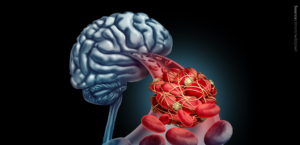About the structure and biological function of SM
Structure. Sphingomyelins (CerPCho, or SM) belong to the group of phosphosphingolipids within the sphingolipids. Their structure consists of a ceramide backbone bound to a phosphorylcholine molecule. The ceramide backbone contains two hydrocarbon chains: a long-chain base which is linked to a fatty acid via an amide bond. The fatty acid and the long-chain base can be of variable length, hydroxylated, and contain double bonds.
Function. Sphingomyelins play a key role in the cell membrane of animals. They are vital to the formation of lipid rafts and required for the activity of raft-dependent membrane proteins such as some ion channels. They also serve as precursors for sphingolipids in the ‘sphingomyelin cycle’. Further, sphingomyelin metabolism aberrations have been linked to Alzheimer’s and cardiovascular disease.



